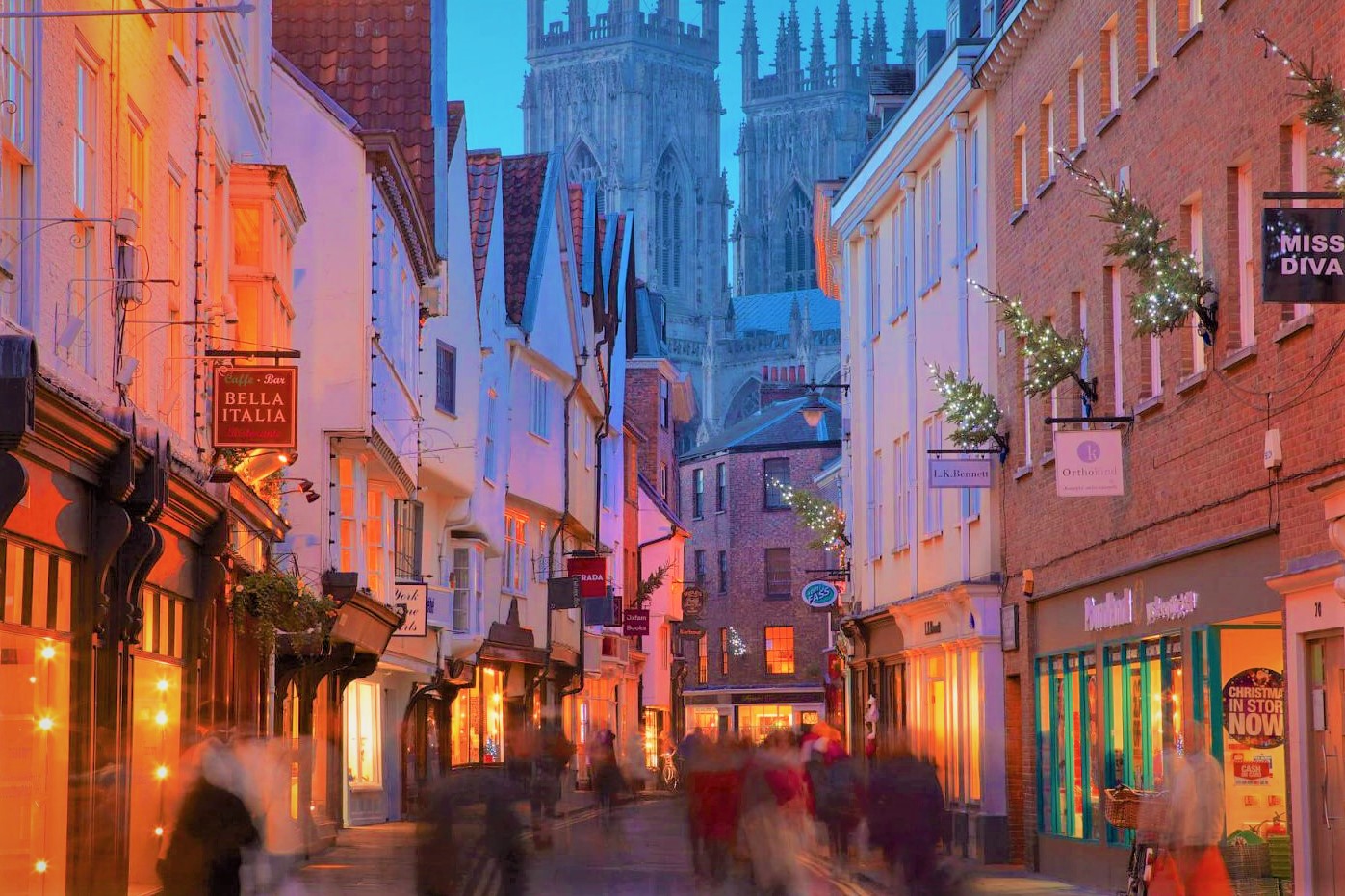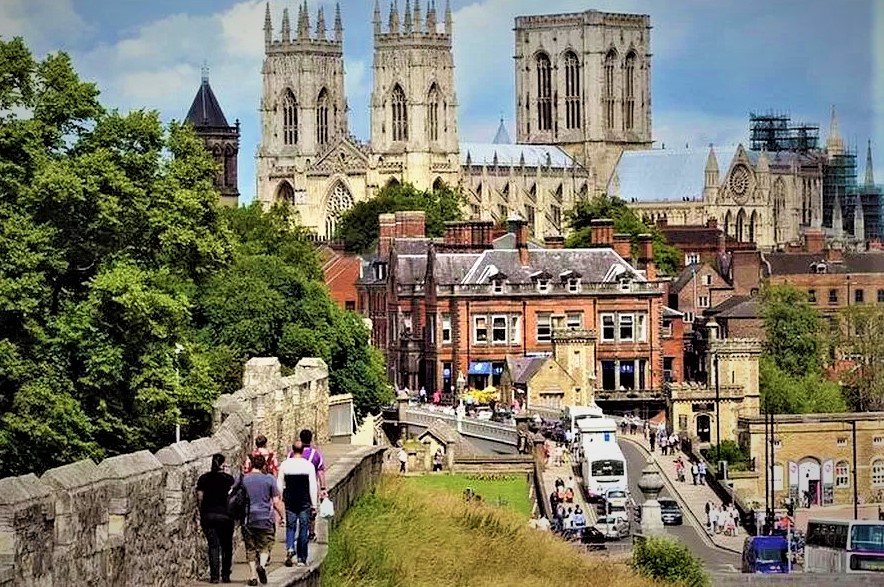
Introduction About York City
York is a beautiful old city, located at the confluence of the Rivers Ouse and Foss in North Yorkshire, England. Founded by the Romans in AD 71 as Eboracum, York in turn became the capital of the Roman provinces of Britannia Inferior, and of the kingdoms of Northumbria and Jorvik.
During the Middle Ages, York developed as a major wool trading center and became the capital of the Northern Ecclesiastical Province of the Church of England, a role it continues to hold. York is a walled city of great heritage located where the River Foss meets the River Ouse. Many scenes abound in this ancient city. York is only two hours by train from London. Many interesting sights attract the attention of visitors as they walk through the city’s crowded streets.
One of the symbols of the city is York Minster. This impressive stone cathedral is full of remarkable works of art. Children will not be bored by the “explorer’s basket” and other activities for young people in the cathedral. One of the unique offerings in York is the JORVIK Viking Center. This recreation of a Viking village captures the sights, sounds and even smells of a thousand years ago. The old Clifford’s Tower, built by William the Conqueror and rebuilt by Henry III in the 13th century, is a great place for panoramic views of the city.
The Yorkshire Museum has an extensive collection of archaeological and geological art. The real recreation of Victoria Street is one of the highlights of the museum. The Railroad Museum is a free museum that explores 300 years of railroad history, including interactive exhibits that appeal to visitors young and old.
The History of York is the history of England.
York is one of the most beautiful and historic cities in England. The Romans knew it as Eboracum. For the Saxons it was Eoforwick. The Vikings, who came as invaders and settled in the city, called it Jorvik.
York’s recent history has marked the city. There are displays of York Minster and its medieval architecture, beautiful Georgian buildings and a Victorian train station. As you explore York, you will discover that every aspect of modern York life is closely linked to the past.
Within its original city walls, the streets and buildings of Old York are well preserved in the heart of the city’s history. The Shambles is a must-see, as it is one of the most famous historic streets in England, often referred to as the best-preserved old street in Europe.
Reason About Why We love York city

Small and mighty – York is an old walled city that really packs a punch. Its history of old roads, snickelways and even shopping streets dating back to the Domesday books means this town is packed with things to see.
See the magnificent Gothic halls of its 2,000-year-old cathedral that could be compared to the tower of Pisa, or the tree-lined streets and the beautiful 13th century that mock the Shambles.
Take a horse ride on the world famous race track, visit the many museums and check out the food from the Michelin star to the boat. Wash it down with the world’s first decadent gin, or escape to places that are almost as terrifying as the city itself.
Things To do in York city
Contemporary Art Museum
Many of the artists and designers working in York today are as creative as their counterparts in the past, and the annual Open Studios showcases everything from vases to sparkling salt. bright to wild collection. Rogues Atelier workshops offer tapestry workshops or silver bracelet making; and York has many independent galleries and exhibition spaces.
Try according to McGee, where photorealism rubs shoulders with Turneresque characters. Mosey around the Art of Protest gallery for contemporary international art,
for example Magnus Gjoen’s disturbing skull paintings or Jo Peel’s urban lifestyle. Upstairs in the York Art Gallery, a beautiful 17m (56ft) wall of pottery shows York’s long history through ceramics – from the Romans to the present day. There is even art on the wall of the only Fossgate Social in the street: cafe by day, bar by night. Its green, well-lit garden is perfect for sunset cocktails.
A glimpse of the past at the JORVIK Viking Center
In 866 AD, Ivar Ragnarsson and his army reached York, and the Saxon Eoforwic became Jorvik – the capital of the Viking kingdom. Many traffic titles use the “gate” when the Getting, viking for traffic. Reference is made in 1972 for a new shopping area, revealing property of show.
The JORVIK Viking Center in Coppergate is a popular attraction that recreates the sights and sounds (and smells!) of 10th century Britain with animatronic fishermen, hunters and hunters. mechanical engineering. 20 feet (6m) below you can see ancient fire ruins and experience the thrill of discovering the buried Jorvik, a former Viking city.
Cruise down the Ouse
What is this? The River York, which flows through the city before entering the Humber Estuary. Why go? The Ouse is a delightful riverside walk that is perfect for a lunchtime stroll. Follow the river and you’ll see some of York’s finest sights, from the Millennium Bridge to Clifford’s Tower. You can also take regular boat trips or river cruises.
Don’t miss: Take the boat early in the morning and you’ll be treated to a sunset that gives you time to think (and take pictures). The ship comes with a full bar if you want to drink in the evening and have a warm welcome on board.
Climbing Clifford’s Tower
What is this? Stay in the Norman ruins at the heart of York Castle.
Why go? Like most of the history of this city, the name of this tower has tragic roots: Roger de Clifford was hanged for treason on this site in 1322. Today, the tower offers a spectacular view. At the top of the hill, you will be rewarded with incredible views of York Minster and the city centre, and on a clear day you can see as far as the North York Moors National Park.







